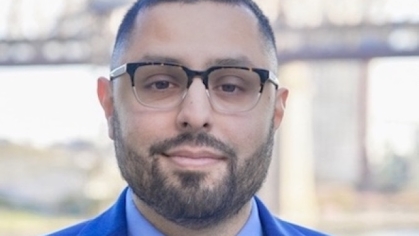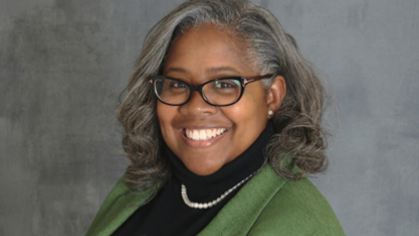We recently had the opportunity to speak with Associate Professor Lenna Nepomnyaschy about Equal Pay Day and what Americans can do to achieve greater equality for women.
Why is it important to bring attention to Equal Pay Day?
Equal Pay Day was originated by the National Committee on Pay Equity (NCPE) in 1996 as a public awareness event to illustrate the gap between men's and women's wages. Equal Pay Day, originally called “National Pay Inequity Awareness Day” and changed in 1998, is the day that women earn the same amount of money that men made in the prior year. It is also the day when we must acknowledge the continuing struggle for women and concede that the fight for women’s equality is not only unfinished but is actually being turned back in many places in the United States.
This year, Equal Pay Day is March 14, reflecting that the average US woman had to work 2 ½ months longer to make what the average white US man earned in the previous year. Women on average earn 84 cents for every $1 a man earns. Even more alarming, this overall gender pay gap hides tremendous disparities by race and ethnicity. Equal Pay Day is July 27 for Black women, October 5 for Latina women, and November 30 for Native and Indigenous women. These gaps have persisted for over 20 years, even though women today are more likely than men to complete high school, college, and graduate school.
Why do women earn less than men?
There are a number of interrelated factors that have been identified. First, is the difference in the types of jobs and industries that men and women work in, referred to as occupational segregation. In general, jobs dominated by women (e.g., home health care and child-care) offer much lower pay than jobs dominated by men (e.g., construction and trucking). However, even within the same job and those with equal representation by sex (e.g., retail workers and managers), men earn much higher wages than women. This points to two other factors: differences in men’s and women’s years of experience and hours worked, and just pure discrimination. All of these factors are inextricably tied to motherhood and, because of discrimination, they impact all women, regardless of whether they have children. Specifically, these gaps are related: to women’s unique role in childbearing; to societal expectations that women will bear the burden of childrearing; and to the unique failure of the US, among all other wealthy nations, to enact social policies that support families with children, such as: parental leave, affordable and high quality childcare and early education programs, and child allowances.
How do these inequalities affect women and their families?
It is certainly not surprising that women in the US are much more likely than men to be poor and to experience material hardship, such as evictions, food insecurity, and many other types of economic precarity. Additionally, half of children will spend some time living with just one of their biological parents, in most cases their mother, and thus children are the most at risk of being exposed to all of these adverse experiences. And again, overall figures mask very large disparities by race and ethnicity. In 2019, prior to the pandemic, 17% of non-Hispanic white children were poor, compared to 31%, 30%, and 23% of Indigenous, Black, and Hispanic/Latino children, respectively. As women head to retirement age, these lifetimes of lower earnings, result in women having only 70% of retirement income than men.
It is hard to think about narrowing the wage gap or about increasing equality for women more broadly without considering the recent national setbacks to women’s rights, specifically with regards to women’s access to reproductive health care and bodily autonomy. In June of 2022, the Supreme Court ruled that the US Constitution does not protect a woman’s right to terminate her pregnancy. The Dobbs v. Jackson Women’s Health Organization decision overturned 50 years of this right granted in the Roe v. Wade decision of 1973. Since the ruling, 24 states have enacted total or near-total bans on abortion, and in some states laws have been written so vaguely, that most doctors are now in fear of even discussing options, including traveling to other states where abortion is legal, even when a woman’s life may be at risk.
What can we do?
Working for social change to improve the lives of those who are vulnerable, oppressed, and living in poverty is a core tenet of the social work profession. Thus, advocating and fighting for policies that address racism, discrimination, low wages, poverty, and lack of access to healthy food, affordable and stable housing, sick leave, parental leave, and universal high-quality education and health care are the first steps. And because the enactment of such policies is inherently a political process, social workers must vote, advocate, and fight for policies that expand voting rights and increase access to participation in the democratic process for all Americans. As we consider the inequalities that have led to Equal Pay Day, now is the time to contact your local, state, and federal representatives to let them know how important it is to enact legislation is to promote and protect the rights and equality of all women across the United States.
This story was created in partnership with Rutgers School of Social Work's Inclusion, Intersectionality, Diversity, Equity, and Advancement (IIDEA) Committee in support of our commitment to diversity, equity, and inclusion.



